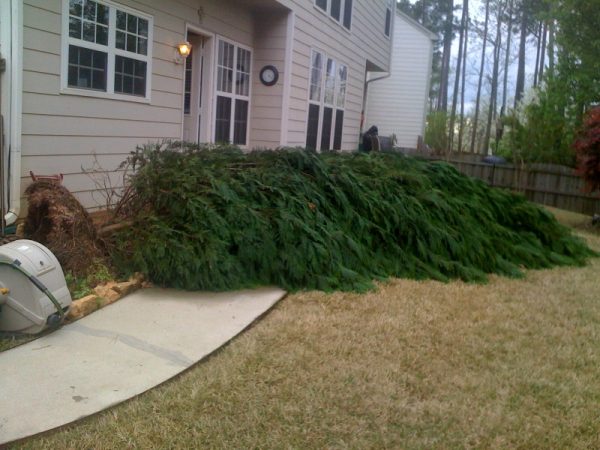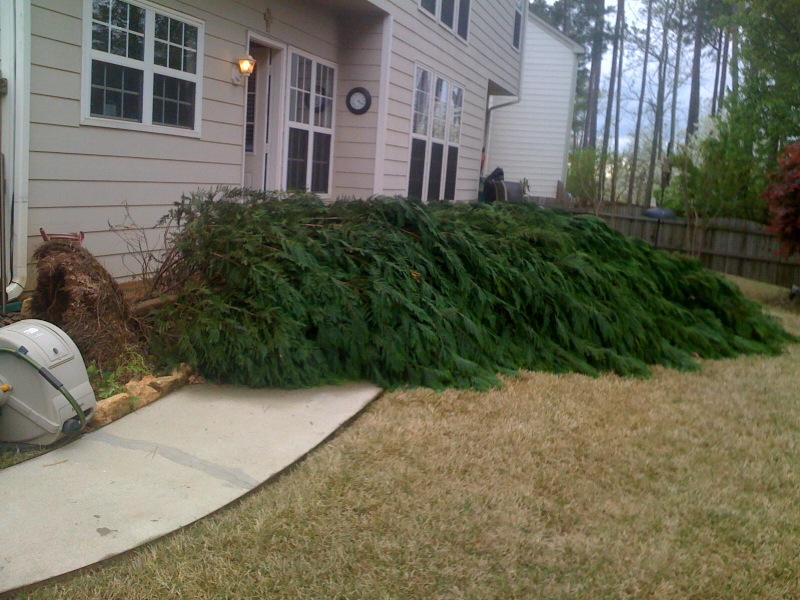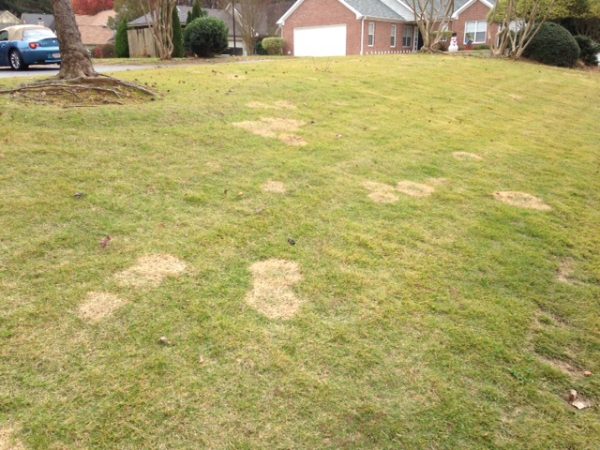Leyland Cypress – Fallen

It’s not unusual to see tall Leyland cypress trees that have fallen over during high winds, particularly after a heavy rain.
Leyland cypress has a shallower root system than you’d think…and few strong anchor roots. If yours is taller than 15 feet, it can not be righted successfully. The damaged roots will never recover.
Let’s review the basics of righting small trees that lean or have fallen. The first task is to shovel out a space under the root ball so it can fall back into place when the tree is pulled upright. Even if you can’t see a void under the root ball, dig underneath to remove soil that was disturbed as the tree fell. If you see broken roots, clip them cleanly with pruners. Use very thick padding under the rope or chain you wrap around the trunk in order to pull on the tree.
Once the tree is upright, tamp the soil around it with your shoes and water it thoroughly. This settles the soil into place. Once the tree is straight, you have to keep it that way for 5 – 10 years. If it is six to ten feet tall, drive a sturdy six-foot long stake two feet from the trunk on each side of the tree. Loop padded wire or chain loosely around the trunk and stake. The support should be loose enough to allow some swaying but not so loose that the tree can fall again.
If the tree is 10 – 15 feet tall, use three strong stakes driven into undisturbed soil and connected to the tree with nylon belting. Again, the guying should be loose enough to allow some swaying by the trunk. Do not use water hose to pad guy wires. This can saw the trunk in half. Nylon belting one to two inches wide is a better material for holding the tree upright.
The best way to attain good new root growth is to spread mulch at least four feet from the trunk in all directions and keep the tree watered in summer.

Help! I’ve fallen and I can’t get up!
















